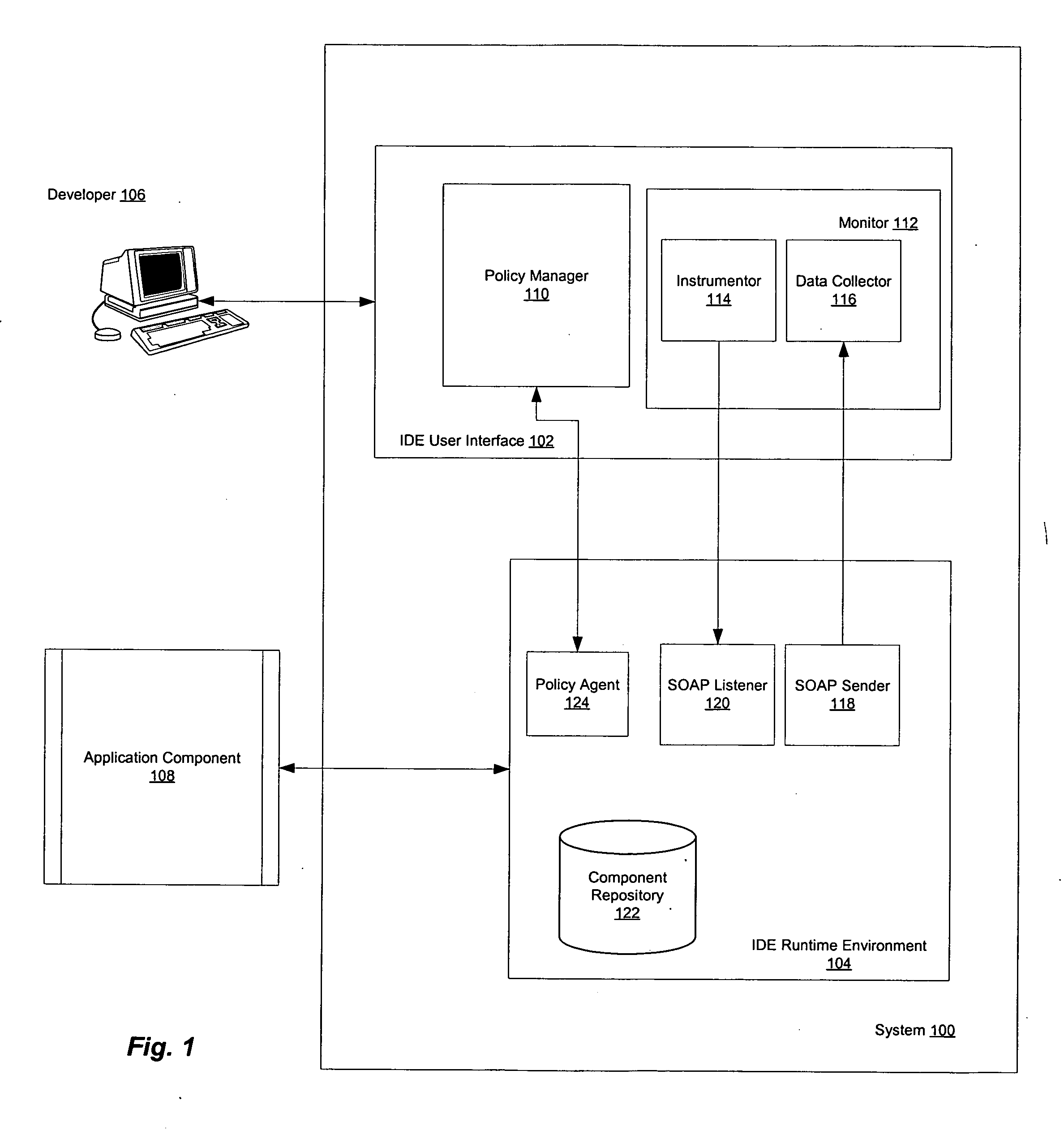Integration of context-sensitive run-time metrics into integrated development environments
a technology of integrated development environment and run-time metrics, applied in the field of integrated software development environment, can solve the problems of more than 70% of developer time spent, tools are not developer-focused, and developers do not have access to real-world data concerning software operation, etc., and achieve the effect of efficient software developmen
- Summary
- Abstract
- Description
- Claims
- Application Information
AI Technical Summary
Benefits of technology
Problems solved by technology
Method used
Image
Examples
Embodiment Construction
[0029] Referring now to FIG. 1, there is shown a block diagram illustrating an example of a system 100 in accordance with the present invention. System 100 includes an IDE UI 102 and an IDE Runtime Environment 104. Also illustrated in FIG. 1 are a developer workstation 106 and application component 108.
[0030] IDE UI 102 provides an environment in which the developer 106 can do the actual software development. IDE UI 102 includes a Policy Manager 110, and a Monitor 112. As is known in the art, monitors typically host management applications and collect and report on various characteristics of the hosted applications. However, unlike traditional monitors that operate in a stand-alone fashion, monitor 112 is preferably embedded within the IDE user interface 102 in order to provide a seamless interface between the development environment and the collected production data for developer 106. Monitor 112 includes an instrumentor 114, which enables developer 106 to control the operation of...
PUM
 Login to View More
Login to View More Abstract
Description
Claims
Application Information
 Login to View More
Login to View More - R&D
- Intellectual Property
- Life Sciences
- Materials
- Tech Scout
- Unparalleled Data Quality
- Higher Quality Content
- 60% Fewer Hallucinations
Browse by: Latest US Patents, China's latest patents, Technical Efficacy Thesaurus, Application Domain, Technology Topic, Popular Technical Reports.
© 2025 PatSnap. All rights reserved.Legal|Privacy policy|Modern Slavery Act Transparency Statement|Sitemap|About US| Contact US: help@patsnap.com



